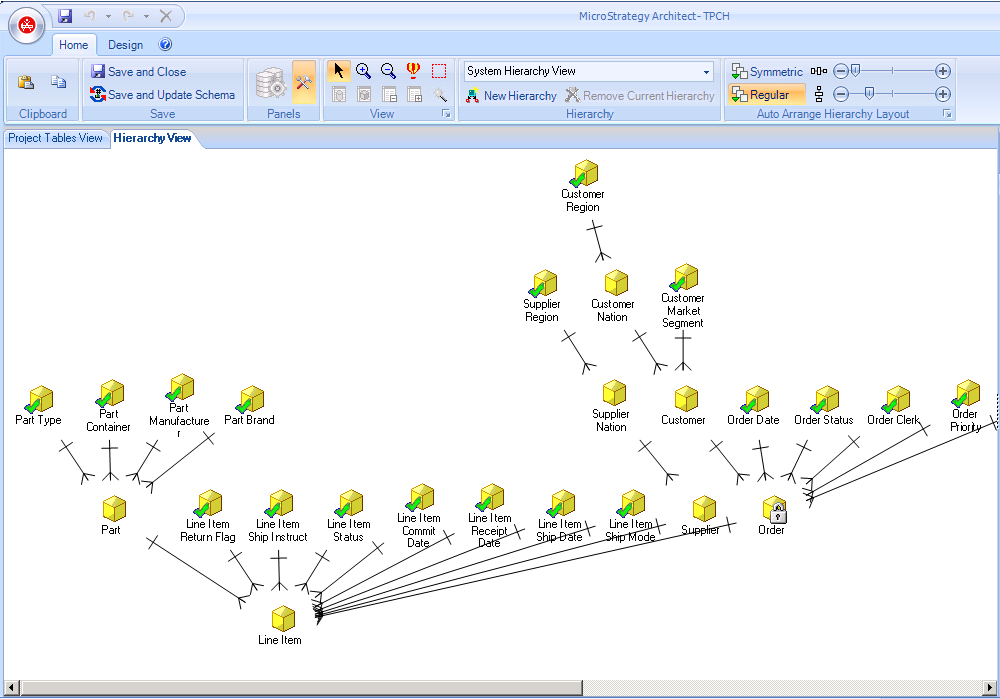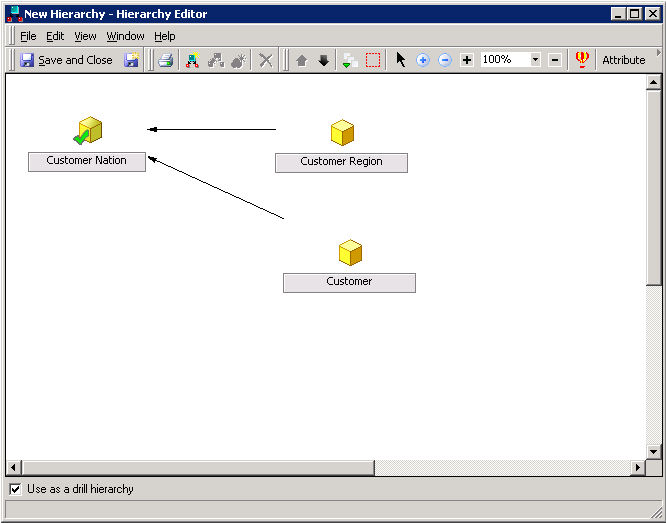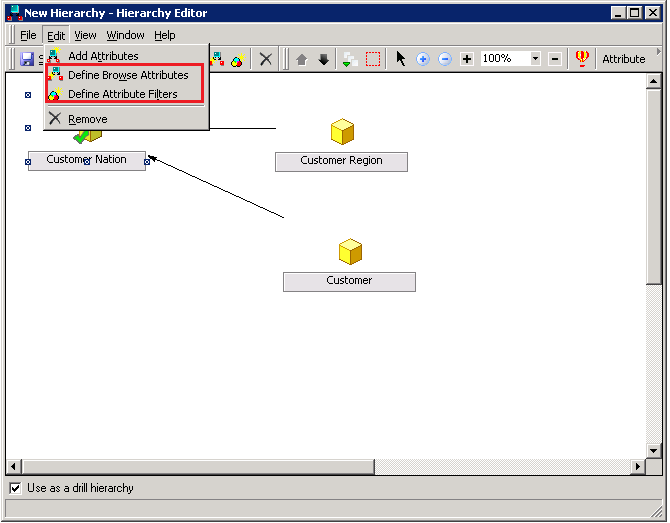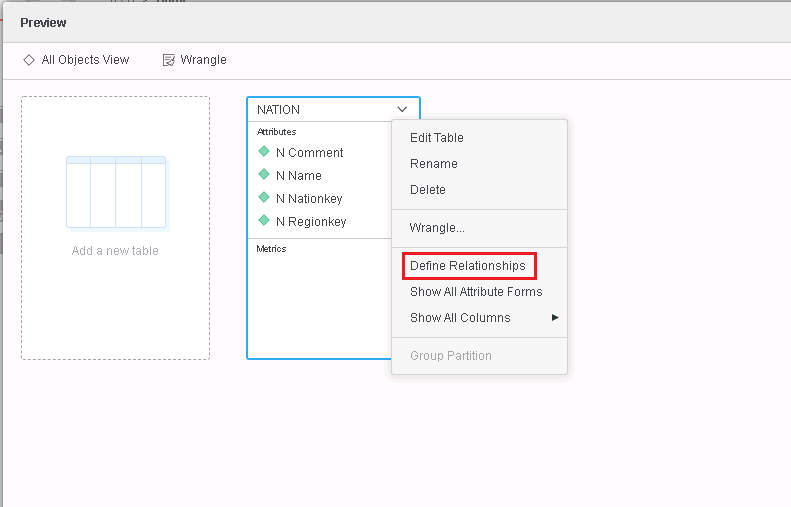Version 2021
Hierarchies
No PostgreSQL specific customizations were made for this feature.
Hierarchies in a logical data model are ordered groupings of attributes arranged to reflect their relationship with other attributes. Usually the best design for a hierarchy is to organize or group attributes into logical business areas. For example, you can group the attributes Year, Month, and Day to form the Time hierarchy.
In MicroStrategy, there are two different types of hierarchies: system hierarchy and user hierarchy. System hierarchies are automatically generated when a project is created and are maintained by the relationships that exist between attributes in the project. User hierarchies are groups of attributes and their relationships to each other, arranged in ways that make sense to a business organization. User hierarchies are user-defined and do not need to follow the logical data model. As the structure of your business intelligence system evolves, you can modify the design of a user hierarchy to include additional attributes or limit user access to certain attributes. This type of hierarchy is created to provide flexibility in element browsing and report drilling.
There are three ways to create user hierarchies within MicroStrategy.
-
Via the Architect interface in MicroStrategy Developer. See the Project Design Help for more information.

-
Via the Hierarchy Editor in MicroStrategy Developer. See the Project Design Help for more information.

Each attribute in a user hierarchy has properties that affect how that attribute is displayed and accessed in a hierarchy. You can use the Hierarchy Editor to configure each of these properties.
- Element Display: Determines the elements a user can see. The element display may be locked, unlocked, or limited.
- Attribute Filters: Specifies whether the data retrieved and displayed should be complete or filtered by any specific criteria. A filter on a hierarchy acts like a filter in a report. Only data satisfying the filter criteria is displayed.
- Entry Point/Not an Entry Point: Specifies whether the user can begin browsing in this hierarchy using this attribute.
-
Browse Attributes: Shows the attributes to which users can browse from a given attribute. Represented by lines that connect one attribute to others. See Hierarchy browsing for more information.

-
Via the MTDI editor. See Define Relationships Between Attributes in the Workstation Help for more information.

